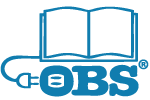Content Imperative
The American Printing House for the Blind (APH) is the world’s largest nonprofit organization creating educational, workplace, and independent living products and services for people who are blind and visually impaired. APH sought consultancy services to assist in review of its major initiative, the REAL (Resources with Enhanced Accessibility for Learning) Plan. Through REAL, APH will improve efficiency in the timely delivery of high quality educational materials to K-12 students who are blind or visually impaired. OBS and APH collaborated on the assessment of REAL, resulting in the deployment of Agile methodology to help APH develop and implement a re-tooled, XML-centric production system and workflow, a pioneering effort which APH sees as a fulcrum for change in production going forward. OBS served as the Agile “catalyst” that helped initiate that change, engaging APH’s existing staff and infrastructure, in the relatively short period of six months.
By definition, Agile can be both disruptive and productive – flexible, practical, and not theory-based. It prioritizes group collaboration and exchange, maximizing individual contributions by promoting an atmosphere of trust, self-organization, and adaptation to changing technology requirements by frequent release of functioning code. For APH, a 150-year old publishing house strong on tradition and expert in the creation of high quality, embossed braille products, taking an Agile approach to new digital initiatives was both exhilarating and challenging. In an organization with an intensely loyal and mission-driven staff, and an unflagging workload that demands sustained productivity, there was little appetite – or time – for learning new strategies that did not prove productive right away. Through regular phone scrums, face-to-face meetings, and comprehensive, transparent documentation, OBS encouraged members of the APH team to work together in new ways, build trust, and empower each other to move forward.
OBS’s Role
- Encourage Project Management discipline and enhance accountability;
- Introduce rapid iterations of code for reality testing purposes and to help mitigate risk;
- Control costs;
- Introduce metrics to measure progress;
- Minimize disruption while maintaining forward momentum.
During the first of two stages of work, we all came to understand more fully both the intricacies and the broad scope of the overall strategic effort; empowered with this information, APH redirected the team’s efforts and focus during Stage II to assist in the planning of an essential production software product rollout, at the heart of the strategic digital effort.
Together, OBS and APH:
- Conducted software needs assessment and gap analyses;
- Observed, documented, and analyzed APH budgets and workflows;
- Built interdepartmental teams and assigned roles;
- Wrote user stories to elicit software and workflow requirements;
- Identified a high-level feature set for APH’s first production-ready project;
- Developed and presented a Product Plan outline to get to an “alpha-ready” stage;
- Introduced a process for APH to use on other product rollouts.
APH reports that they have internalized many of the Agile methodologies introduced by the OBS team. Change management is a challenge, but it is crucial to survival in today’s constantly evolving publishing marketplace. In its work with OBS, APH took this challenge in stride.
“It has been an illuminating and productive last six months!” —Julia Myers, APH Director of Resource Services & NIMAC
Links
